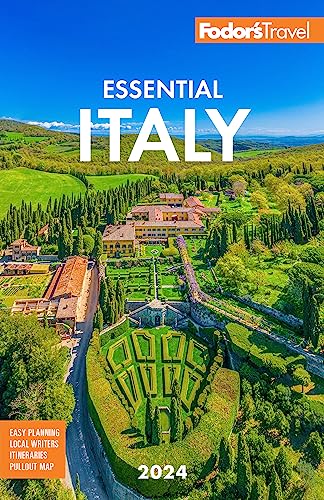Great Itineraries
A Great Northern Italy Itinerary
Northern Italy is a region with high fashion, big wines, and beautiful lakes.
Day 1: Milan
Start off in Milan, Italy's capital of art, fashion, and design. Explore elegant shops around the Duomo and Via Montenapoleone. Some of Europe’s great art treasures are housed in the Brera Gallery. The elegant Basilica di Santa Maria presso San Satiro is about a 20-minute walk from Santa Maria delle Grazie, where Leonardo’s stunning Last Supper is housed. Spend a night at the opera in La Scala, Italy's most illustrious opera house.
Logistics: Central Milan is compact, with excellent public transportation.
Day 2: Bellagio
Lake Como combines some of Italy’s most beautiful scenery with elegant historic villas and gardens, making it truly worthy of a full-day excursion. Bellagio is a pretty village from which you can ferry to other points along the lake, take walking tours, hike, or just sit on a terrace watching the light play on the sapphire water and the snowcapped mountains.
Logistics: Como's San Giovanni station is just one hour by train from Milan, and Bus C10 leaves hourly from here for the 70 minute lakeside journey to Bellagio. In Bellagio you won’t need a car, since most of your touring will be on foot, by ferry, or by bus.
Days 3 to 5: Verona/Mantua/Vicenza
Take an early train to Verona (90 minutes from Milan) and settle into your hotel. Start your exploration of Northern Italy's three most important art cities with Verona's ancient Roman arena, theater, and city gates; its brooding medieval palaces and castle; and its graceful bridge spanning the Adige.
The next day, make the 30- to 45-minute train trip to Mantua, arriving in time for lunch featuring a local specialty: tortelli di zucca (pumpkin-filled ravioli) served with sage butter and Parmesan cheese. Check out the Mantegna frescoes in the Palazzo Ducale, or visit Giulio Romano’s Palazzo Te, a 16th-century pleasure palace. Take the train back to Verona in time for dinner and, perhaps, an opera in the Roman amphitheater.
On Day 3, head to Vicenza (30 minutes by train) to see the palaces, villas, and public buildings of the lion of late-16th-century architecture, Andrea Palladio. Don’t miss his Teatro Olimpico and his famous villa, La Rotonda, slightly out of town. If time allows, try to see the frescoes by Gianbattista and Giandomenico Tiepolo in the Villa Valmarana ai Nani, near La Rotonda. For lunch, try baccalà alla vicentina, the local salt-cod dish.
Day 6: Padua
Most people visit this important art and university center on a day trip out of Venice, but then they miss one of Padua’s main attractions: the nightlife that goes on in the city’s wine bars and cafés from evening until quite late. See the Giotto frescoes in the Cappella degli Scrovegni and the Basilica di Sant'Antonio before lunch, then spend a relaxing afternoon at the Villa Pisani, enjoying its gardens and important Tiepolo fresco.
Logistics: Trains run frequently to Padua from Verona (1 hour) and Vicenza (30 minutes); you don’t really have to schedule ahead.
Day 7: Venice
The first things you'll probably want to do in Venice are to take a vaporetto ride down the Grand Canal and see Piazza San Marco. After that, move on to the adjacent Palazzo Ducale and Sansovino’s Biblioteca Marciana, across the piazzetta.
For lunch, take Vaporetto No. 1 to Ca’ Rezzonico, and have a sandwich and a spritz in Campo Santa Margherita. From here, make your way to the Galleria dell’Accademia and spend a few hours taking in its wonderful collection of Venetian paintings. In the evening, walk up the Zattere and have a drink at one of the cafés overlooking the Canale della Giudecca.
Logistics: Seeing the Grand Canal and Piazza San Marco in relative tranquility will be your reward for getting up at the crack of dawn (arrive at the vaporetto before 8:30 to avoid the rush) and doing a little extra planning.
Day 8: Venice
If the Galleria dell’Accademia has whetted your appetite for Venetian painting, start the day by visiting churches and institutions where you can see more. If your taste runs to modern art, head to the Peggy Guggenheim Collection and, down the street, the Pinault Collection in the refashioned Punta della Dogana.
In the afternoon, head for the Fondamenta Nuova station to catch a vaporetto to the outer islands: Murano, where you can shop for Venetian glass and visit a glass museum and workshops; Burano, known for lace making and colorful houses; and Torcello, Venice's first inhabited island and home to a beautiful cathedral.
Day 9: Venice
Pay a visit to the Rialto, one of Europe’s largest and most varied fish markets, where Venetians also buy their fruits and vegetables as well as, of course, their fish. Note that the Rialto Market is closed on Sunday and Monday; since there is no fishing on Sunday, there can be no fresh fish available on Monday.
Have lunch in one of the excellent market-area restaurants. Then, on your last afternoon in Venice, leave time to sit with a coffee or spritz in a lively square or in a café along the Fondamenta della Misericordia in Cannaregio. Alternatively, visit Tullio Lombardo’s lyrical Miracoli, a short walk from the San Marco end of the Rialto Bridge, or Palladio’s masterpiece, the Redentore church on Giudecca.
Day 10: Venice/Departure
Take one last vaporetto trip up the Grand Canal to Piazzale Roma and, after saying good-bye to Venice, catch Bus No. 5 or an ATVO (private line) bus to the airport.




